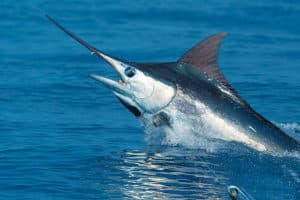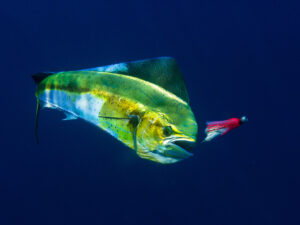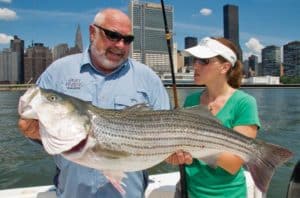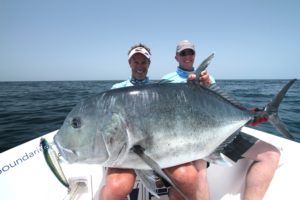In each issue of Sport Fishing magazine, a panel of five international expert ichthyologists identifies unusual and often amazing fishes in photos submitted by readers. Here you’ll find the I.D. and information for interesting catches from far and wide.
GOLD-PLATED SILVER KING
Question:
While fishing with me off Destin in June, 16-year-old Will Chapman, of Mobile, Alabama, caught this remarkable tarpon. Have you ever seen or heard of such a gold-and-silver tarpon? What would account for the gold color, versus classic dark green, over the entire dorsal half of the fish?
Capt. Pat Dineen
Flyliner Charters
Destin, Florida
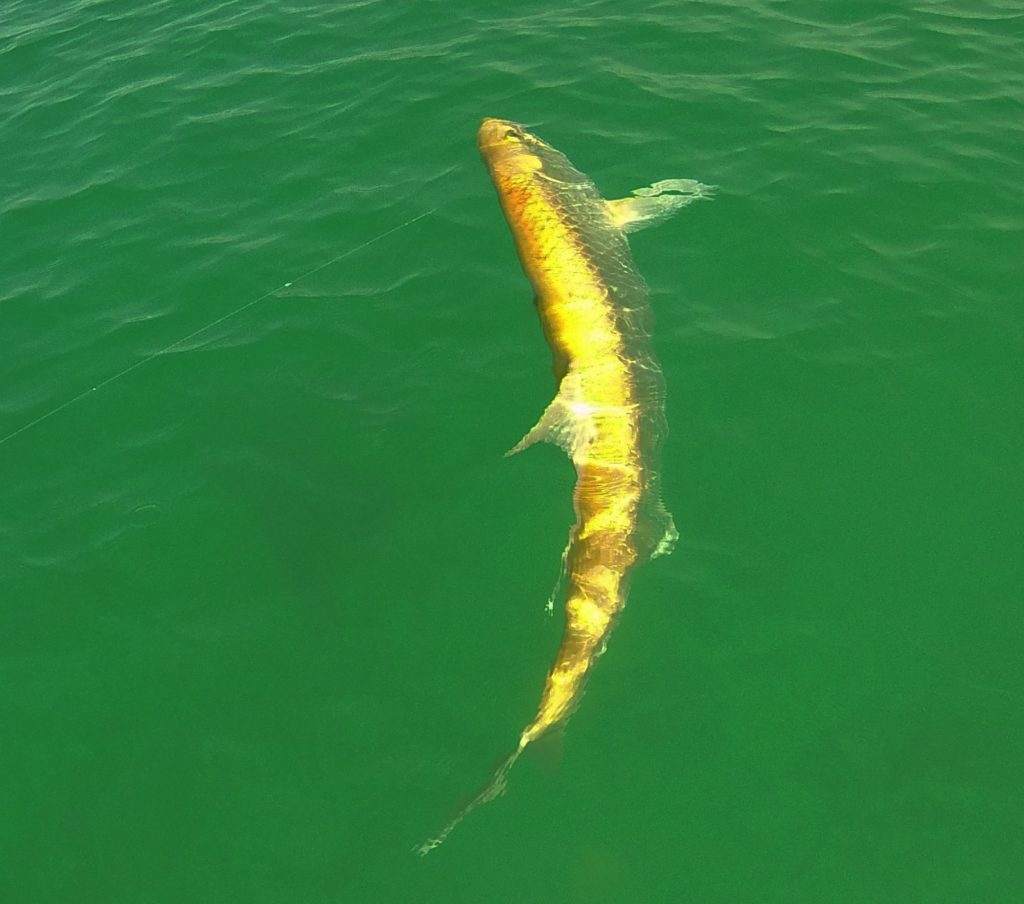
Answer:
Capt. Pat, I can offer only an educated guess on that gorgeous gold tarpon. Apparently there was a failure of the normal pigment, probably melanin, to develop. This could be the result of a genetic aberration that allowed other pigments — like the yellow-gold carotenoids — to be expressed. It’s somewhat analogous to leaves turning gold in the fall as the pigment chlorophyll disappears. But, no: I’ve never seen nor heard of anything like this, and guess it to be extremely rare. Thanks for passing this on. — Bob Shipp
WHITE’S RIGHT FOR THIS JACK’S MOUTH
Question:
We caught this fish 35 nautical miles southeast of Ocean City, Maryland, while fishing for mahi. After much research, I believe it’s a cottonmouth jack. I hadn’t even heard of the species, much less caught one, before this. What is your opinion?
Ed Richardson
Laurel, Maryland
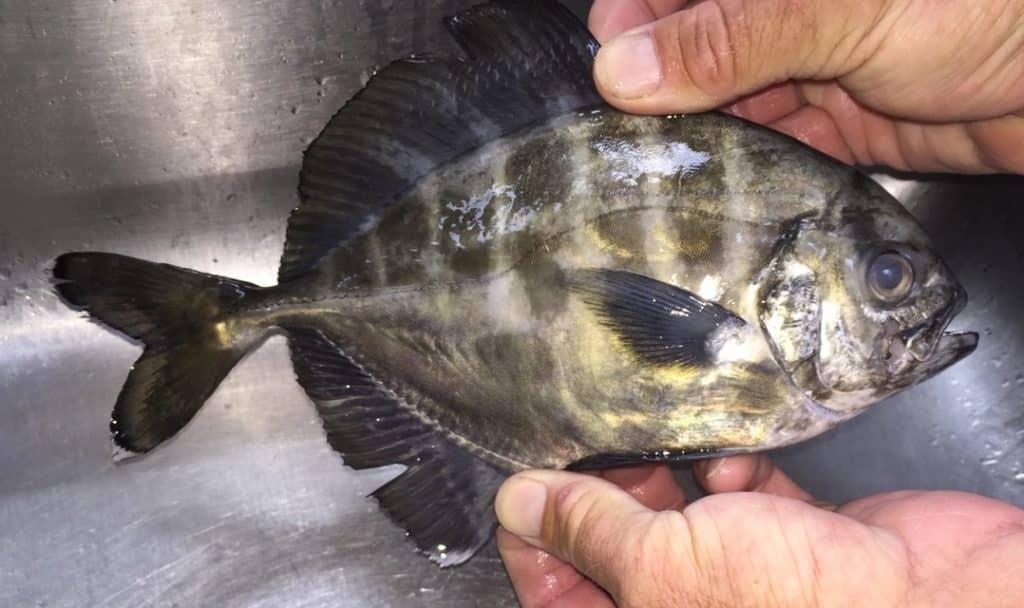
Answer:
You’re right on your ID, Ed. Cottonmouths are jacks in the family Carangidae, and named for the pure-white mouth lining and tongue. Your specimen of Uraspis secunda is a juvenile and differs somewhat from adults. Juvenile characteristics include the six or seven wide bars on the body and the very long, very black pelvic fin. It’s a particularly vexing species because the eggs and larvae are undescribed, and spawning seasonality and location are totally unknown. Adults reach at least 5 pounds — that’s the weight of the IGFA all-tackle record, caught off Bermuda in 2014. The cottonmouth occurs circumglobally; in the western Atlantic, it’s recorded from widely scattered locations between Massachusetts and Brazil. The species reportedly occurs at all levels throughout the water column, either as solitary individuals or in small schools. This may be one of those rare species that migrates widely with ontogeny (development and age). Spawning may be restricted to only part of its range, presumably where the largest individuals occur. But this will remain purely hypothetical until we get more data. The cottonouth is apparently good eating, but it has also been associated with ciguatera poisoning off Cuba.
— Mike Fahay
FAR-FLUNG MYSTERY
Question:
During a recent visit to Ko Kut Island, in the Gulf of Siam, we encountered a number of different species of grouper. I assume this one is a grouper, but know nothing about it and can’t find any references that will ID it. Help me out, please!
Jean-Francois Helias
Fishing Adventures Thailand
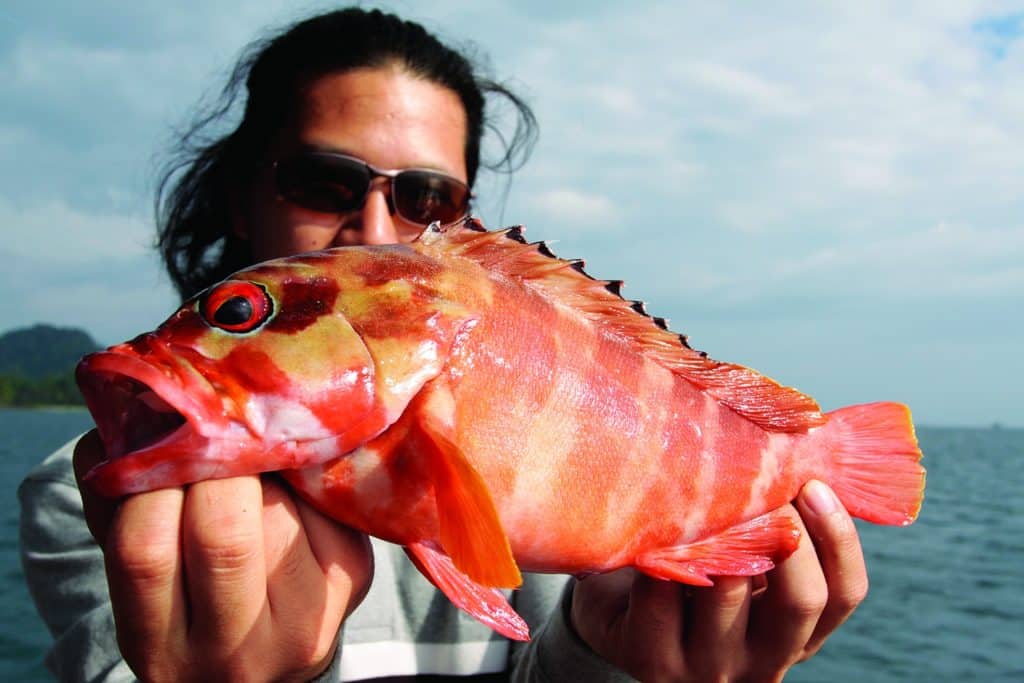
Answer:
This feisty little specimen is called the blacktip grouper, Epinephelus fasciatus. Also known as blacktip rock cod, it’s a common species found around coral reefs throughout the Indo-Pacific, from the Red Sea in the west to as far east as Pitcairn Island. Indeed, they are considered to be one of the two most widely distributed species of grouper in the world, with six different populations identified within their range. They grow only to around 18 inches long, and so are one of the smaller members of the family Serranidae.
The species is usually found on reef or rubble slopes in depths less than 130 feet, but they have been captured as deep as 500 feet. They’re easily recognized by the black tip of the dorsal fin, which contrasts sharply with the banded orange of the body. Like other serranids, blacktip rock cod are protogynous hermaphrodites: They mature first as females, at 8 to 10 inches long, before switching sex to become male. These small but aggressive ambush predators can sometimes be seen sitting with their pectoral fins on the bottom in the coral, looking up at passing fish (and fishers), waiting to consume crustaceans and fish small enough to fit in their mouth. An excellent food fish, the species has become popular for aquaculture in Asia.
— Ben Diggles
PACIFIC PANAMA: TARPON FOR THE LONG TERM
Question:
This is the second tarpon we’ve caught off Cebaco Island, Panama. I’m wondering if it’s the same kind of tarpon that lives in the Atlantic, since we caught it in the Pacific.
Paul Sardina
Sacramento, California
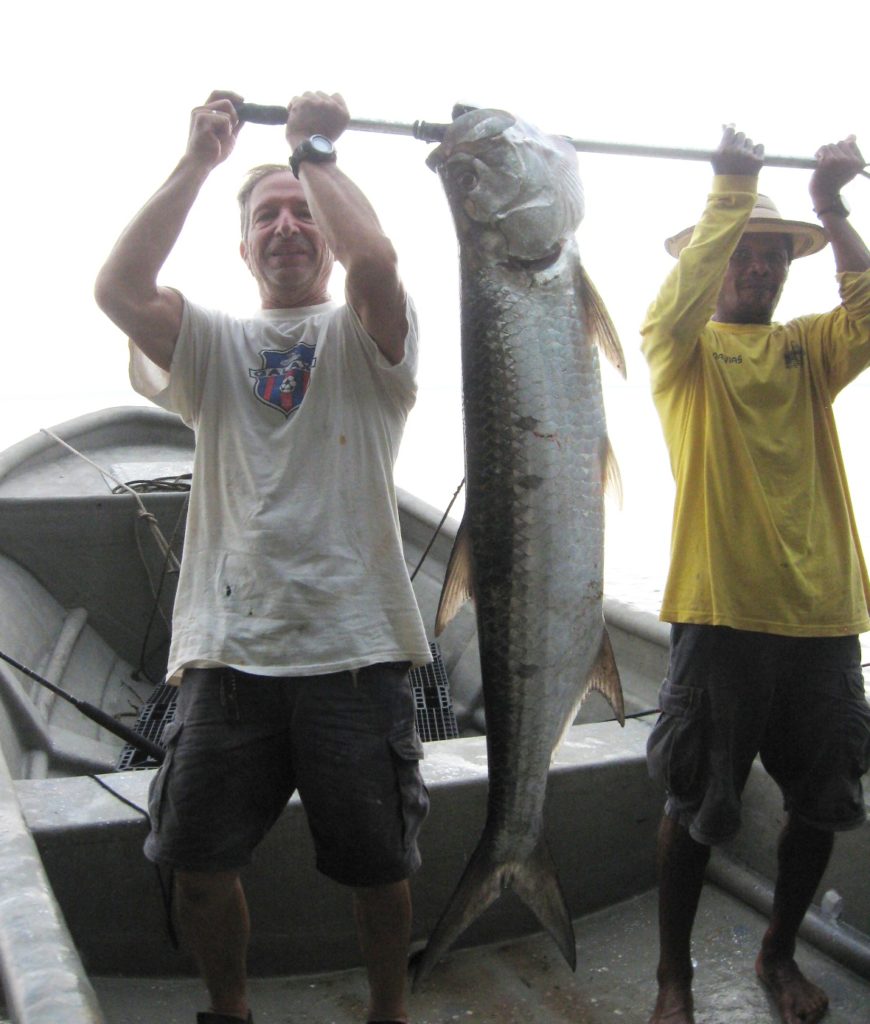
Answer:
Tarpon are caught regularly in Panama and, by local accounts, are spawning there. In addition, fish as small as 5 pounds have been reported caught in Costa Rica, suggesting a population has become established. However, since nobody I know of has caught very small fish (i.e., a few inches long) in the eastern Pacific, the possibility that all tarpon caught in these waters come in through the Panama Canal cannot yet be ruled out. The fact that tarpon catches seem to be limited to the area between western Costa Rica and southern Colombia suggests that a population in these waters has not established itself in the 100 years since the canal opened and provided the species with access to the eastern Pacific. Why those large fish living in the Pacific haven’t roamed farther afield is a mystery; you would think tarpon — a large, pelagic fish that travels long distances in the western Atlantic — could swim from Panama to Mexico in a few weeks or months. Some scientists with the Smithsonian Tropical Research Institute are now working on the genetics of eastern Pacific tarpon to see what clues that might give, and are also attempting to find small juveniles.
— Ross Robertson
Editor’s note: Dr. Ross Robertson, who lives in Panama, has been a research scientist with the Smithsonian Tropical Research Institute since 1975 and has co-authored two editions of the book Fishes of the Tropical Eastern Pacific
PECULIAR PORGY
Question:
My son Jared caught this peculiar-looking fish while we were on a family vacation in the Florida Keys this past summer. We were fishing with my dad over a backcountry grass flat off Big Pine Key, trying to catch some pinfish for tarpon bait. My father has fished the Keys for nearly a decade, but he had never seen a fish like this one. I’m sending this photo to see if the experts can identify the species.
James Victory
Ocean Springs, Mississippi
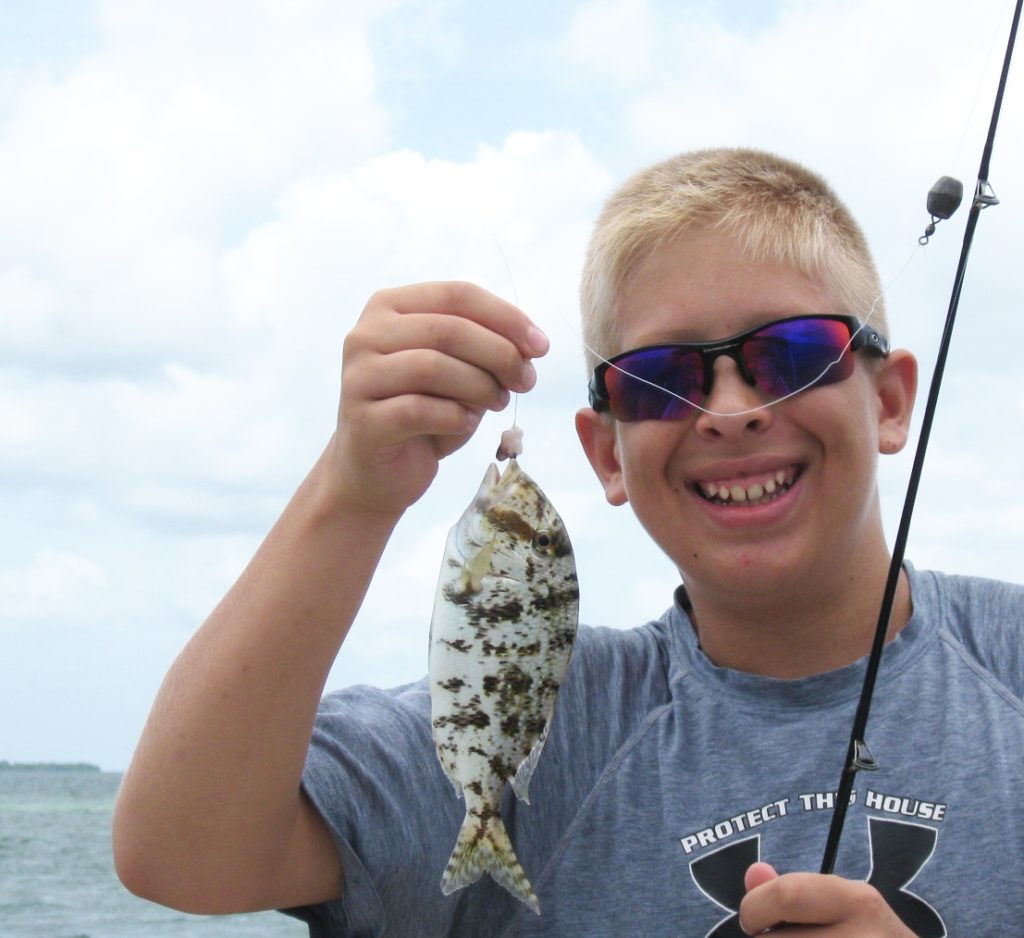
Answer:
Jared caught a particularly vivid grass porgy, Calamus arctifrons, James. This species inhabits sea-grass beds from South Florida and the Florida Keys through the eastern Gulf of Mexico to Louisiana, and grows to a maximum length of 10 inches. It has been reported from depths up to 75 feet. Despite its rather small size, like most porgies, the grass porgy makes excellent table fare.
— Bob Shipp
From the Fish Facts Archives
AFRICAN POMPANO (Alectis ciliaris)
A jack or trevally dipped in chrome and run over by a steamroller could describe the African pompano. This hard-fighting, tasty game fish — not closely related to true pompanos — is found in most of the world’s warm and tropical oceans, around wrecks and reefs. The IGFA all-tackle record stands at 50 pounds, 8 ounces, from Daytona Beach in 1990.
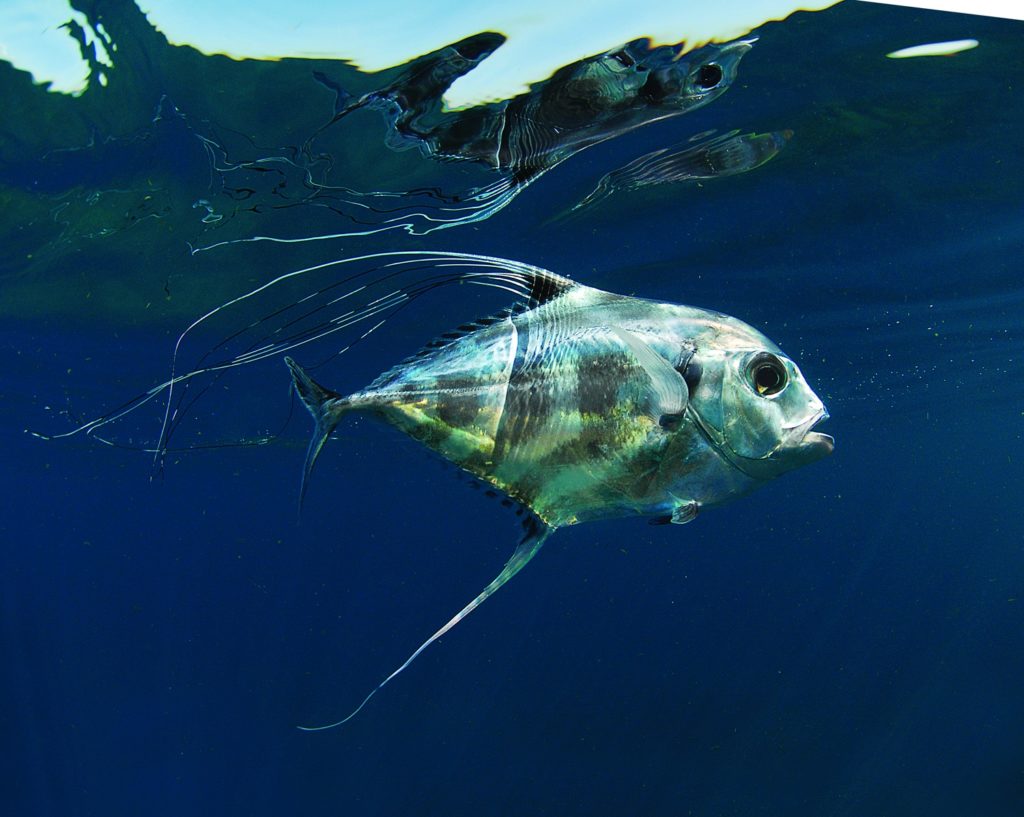
Send Us YOUR Strange or Surprising Catches!
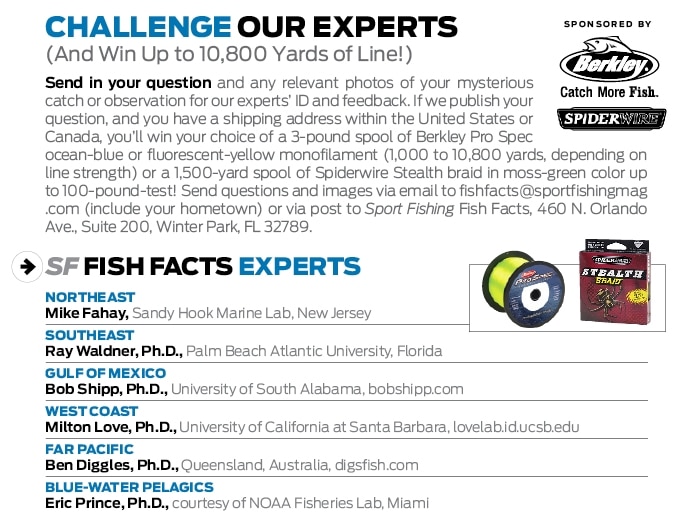
E-mail your questions and photos to fishfacts@sportfishingmag.com.

